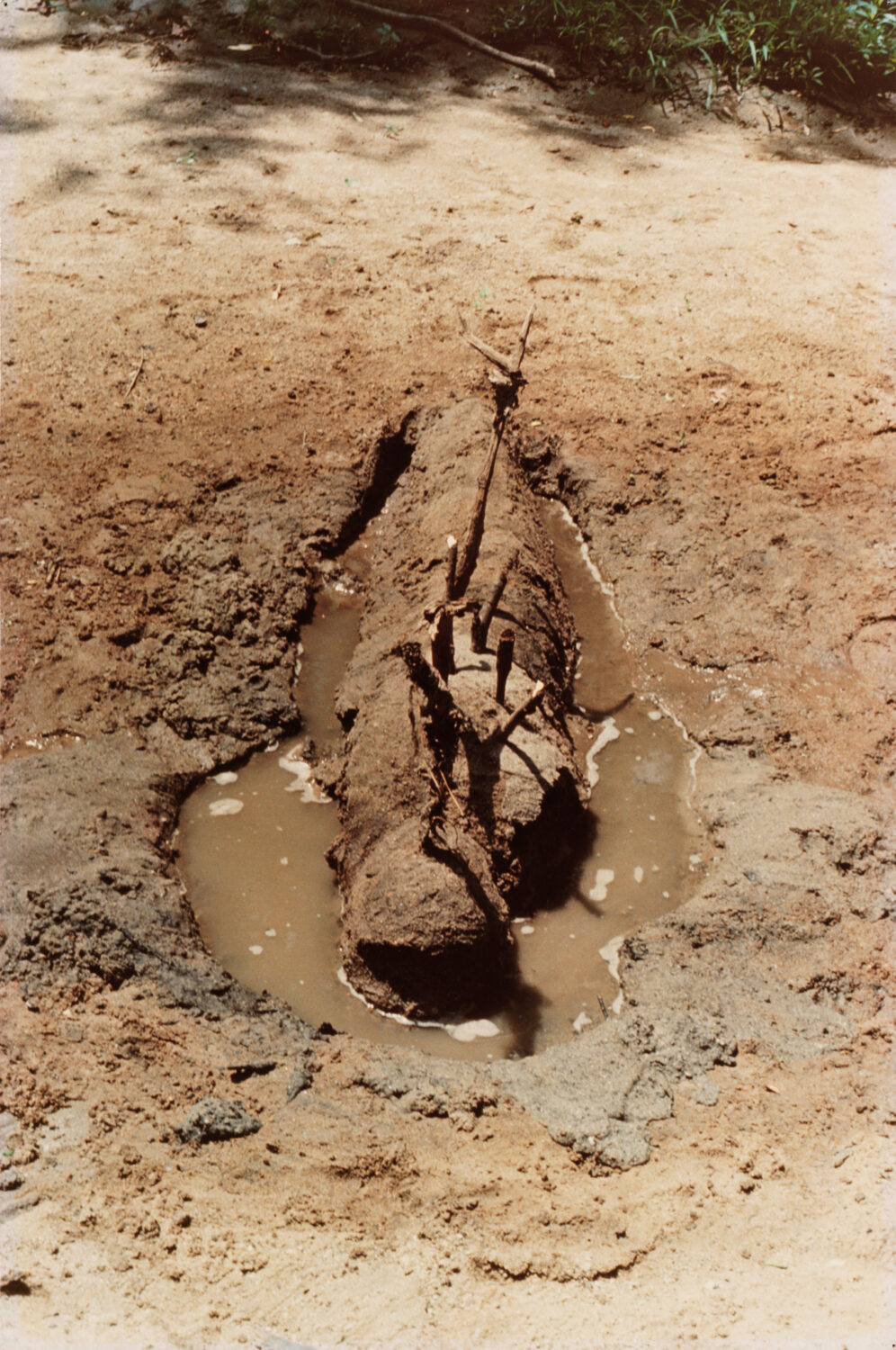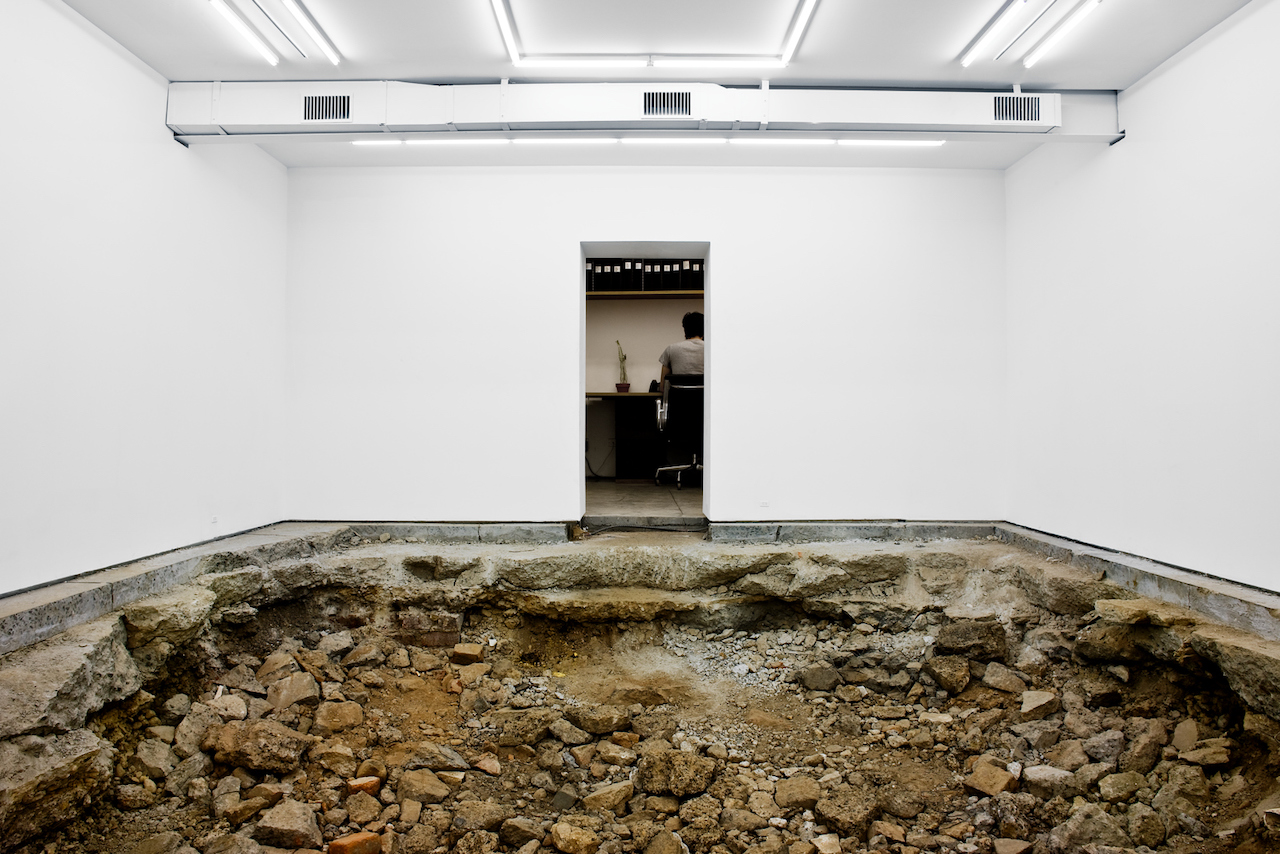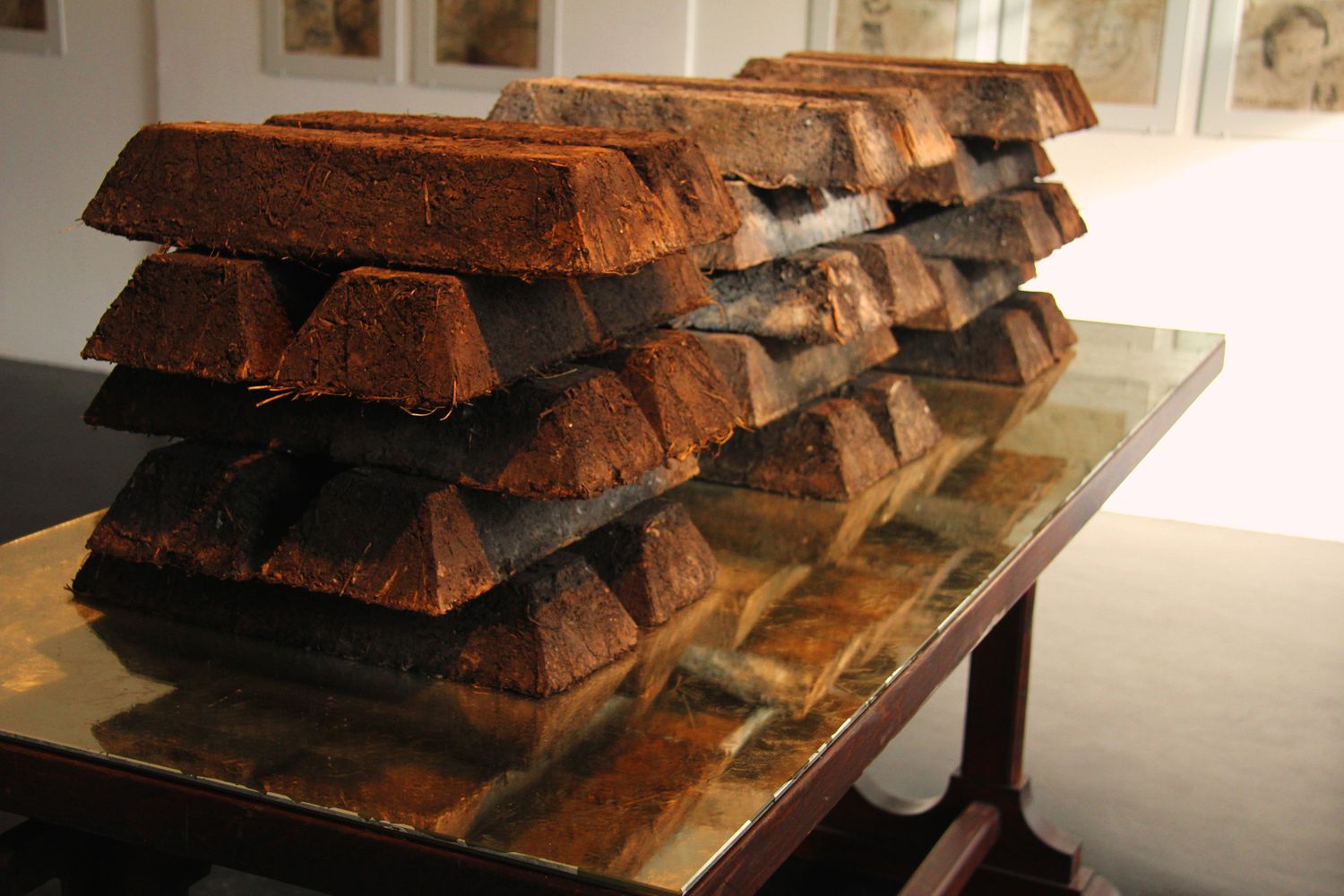Soil in Contemporary Art
By Keshav AnandAs a foundation of life and a reservoir of history, soil is a powerful and timeless cultural symbol. The word “human” actually comes from the Latin word “humus,” meaning earth or ground. Reflecting on humanity’s relationship with the Earth, artists have long embraced soil as a medium, from Palaeolithic sculptures to Renaissance frescoes using soil as pigment. As this essential material faces degradation from intensive agriculture, industrial practices, and climate change, contemporary artists continue to utilise soil to reflect on political, environmental, social and spiritual themes. Spanning the 70’s to present day, Something Curated highlights six powerful artworks using soil as a central medium.
Walter de Maria, New York Earth Room, 1977

Walter de Maria’s New York Earth Room is one of the most iconic installations using soil as a primary material. This work consists of 250 cubic yards of earth spread across the floor of a SoHo gallery in New York City. The piece is immersive, enveloping viewers in the smell, presence, and texture of raw earth. New York Earth Room challenges traditional gallery spaces by introducing natural material into an environment typically reserved for sterile, polished surfaces. The installation disrupts the viewer’s expectation of an art gallery, urging them to consider earth not as something utilitarian but as a contemplative presence.
Ana Mendieta, Untitled (Fetish Series, Iowa), 1977

Cuban-American performance artist and sculptor Ana Mendieta called her interventions in nature “earth-body” works. Inspired by African, Afro-Cuban, early European, and Taino traditions, her celebrated Silueta and Fetish series, created between 1973 and 1980 in Iowa and Mexico, feature various ephemeral works documented on camera. In the series, the artist covered her body with earth and flowers, traced her shape with rocks and vines, among other natural materials, and exposed these various forms to the elements. Untitled (Fetish Series, Iowa) shows a figure-shaped mound in the ground, surrounded by water and pierced with sticks.
Urs Fischer, you, 2007

Urs Fischer’s you is a transformative artwork that deconstructs traditional exhibition spaces by carving a massive pit into the floor of a gallery. The result is an enormous void filled with excavated earth. The viewer is confronted with the stark cavity, an absence that is simultaneously compelling and unsettling. By creating this empty space within a gallery, Fischer challenges the viewer to reconsider the gallery not as a display area but as a mutable environment that can be reshaped and destabilised. The act of digging, of exposing the Earth within a structured, artificial space, raises questions about human intrusion into nature and the extraction of natural resources.
Claire Pentecost, Soil-Erg, 2012

In her installation Soil-Erg, presented at dOCUMENTA 13, Claire Pentecost uses soil to critique the commodification of natural resources. She reimagines soil as a form of currency, emphasising its intrinsic value as a life-sustaining material. Pentecost’s installation reflects on the anthropocentric practice of treating soil as an object to be exploited, proposing instead that it be viewed as a vital resource deserving of care and protection. By creating “soil currencies,” Pentecost draws attention to how modern economies often overlook environmental health in pursuit of profit. Her work offers an alternative value system that acknowledges soil’s ecological worth and the necessity of stewardship.
Asad Raza, Absorption, 2019-2020
Asad Raza’s Absorption is a participatory artwork in which soil itself is “produced” within the gallery space, creating an active cycle of transformation. Raza worked with scientists to create a “new” soil, mixed and enriched in real time by participants. This process-based installation invites viewers to interact with soil as a living, dynamic entity. Absorption emphasises the regenerative potential of soil, challenging the notion of degradation by highlighting soil’s capacity to renew. This project is both an artwork and an ecological practice, encouraging awareness of soil health as crucial to environmental sustainability.
Eve Tagny, Unadorned Landscapes, 2023

Eve Tagny’s recent work, Unadorned Landscapes, takes an introspective look at soil as a vessel of memory and history. Using soil sourced from various sites, Tagny explores themes of colonialism, displacement, and resilience. Her work often integrates soil with organic materials, drawing attention to the interconnectedness of human histories and ecological systems. Unadorned Landscapes reflects on soil as a “scarred terrain,” bearing the imprints of both natural and human interventions. Tagny’s work is deeply poetic, honouring soil’s ability to remember and hold stories of cultural and ecological significance.
Feature image: From Ana Mendieta’s Silueta series, 1970s. Courtesy the Estate of Ana Mendieta Collection, LLC and Galerie Lelong & Co.